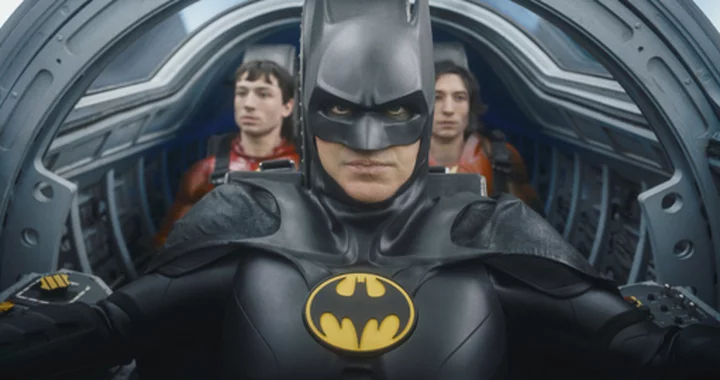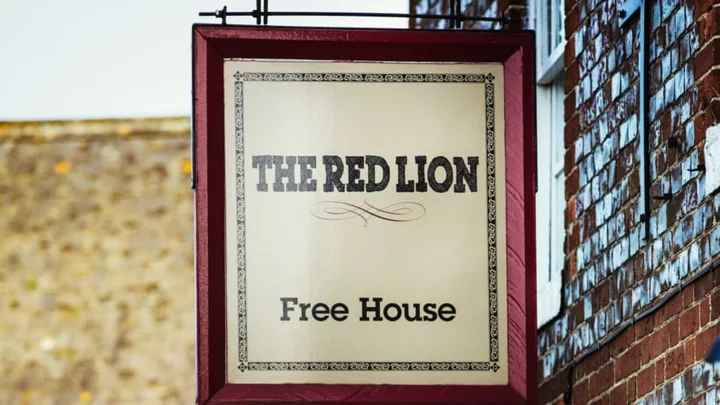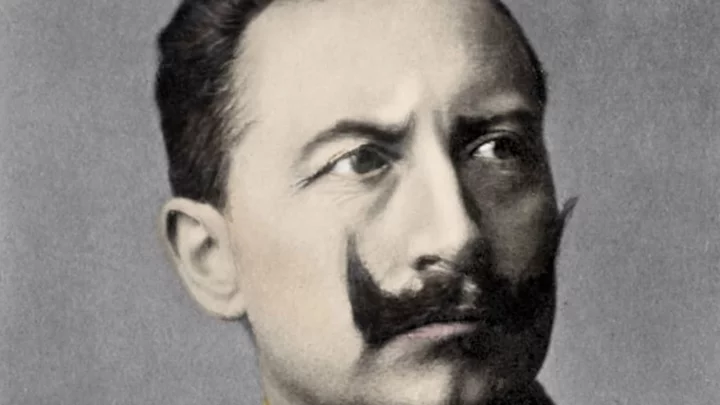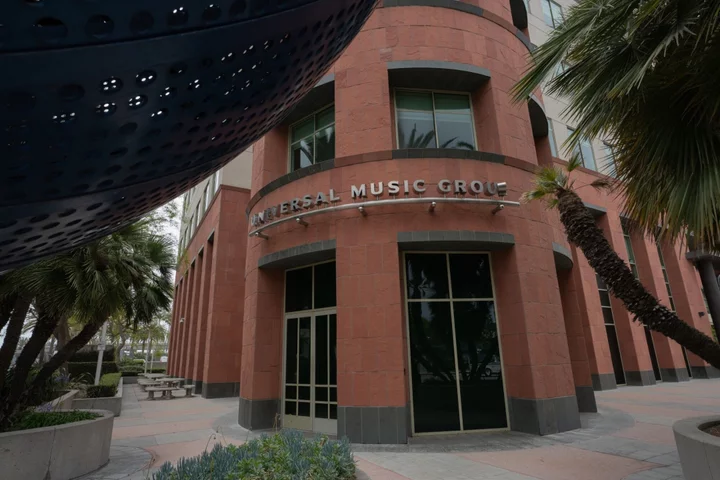Foosball image via Shutterstock
Outside the U.S., the sport where two teams try to kick a ball into the other side's goal without using their hands is known as “football.” However, when it comes to the tabletop version of the game, it seems impossible to reach a consensus. In the UK, the game is “table football.” In France, it’s adorably called “baby foot.” In much of Eastern Europe, it’s “kicker,” after one of the first companies to produce game tables. And in Spain, it’s "futbolín." As usual, Americans have to be different, so we’ve borrowed the German word for “football”, “fußball”, which is pronounced “foosball.” But because the game is played all over the world, there are dozens of regional nicknames for this very popular pastime.
The origins of foosball are a bit murky.
Some sources believe that it started as a parlor game in the 1880s or 1890s, possibly in different parts of Europe simultaneously. Nobody is sure who invented it. Frenchman Lucien Rosengart, an automobile engineer for Citroen, claimed to have come up with the game to keep his grandchildren entertained in the winter. But Alexandre de Fiesterra also said he had the idea while in the hospital recovering from injuries sustained in the Spanish Civil War. The only thing we can say for sure is that Englishman Harold Searles Thornton has the earliest-known patent from 1923, which looks and operates just like the game we know today.
Different Strokes for Different Folks
To the average novice player, a foosball table is a foosball table. However, to a die-hard “fooser,” there are four distinct styles, which necessitate different styles of play.
For example, American style foosball, also known as “Texas foosball,” is generally played on a dense, solid table surface like mahogany, the ball is usually thick plastic, and the foosball men are made of harder plastic, all of which makes for a fast game where power rules. In addition, American tables have three men on the goalie bar as opposed to one goalie in other countries, enabling the player to pull the ball out of the corner without stopping gameplay.
In contrast, French foosball is played on a linoleum surface with a “tacky” feel and a cork ball, making the gameplay much more controlled, with an emphasis on passing the ball and setting up shots, just like real football.
German tables are the softest of the bunch, providing ultimate control of the ball to strategically line up shots on over-sized goals.
Finally, Italian tables are a good mix of styles, well known for using either sandblasted glass to allow for faster gameplay, or plastic laminate to slow things down for precision ball handling.
Professional Foosball Tours America
Foosball was first brought to the United States by Lawrence Patterson, an American military man who was stationed in Germany during the 1960s. While there, he fell in love with table soccer and imported coin-operated machines after he came home. As the popularity grew, Patterson helped found some of the first regional tournaments in the late-1960s. However, it was Missoula, Montana, bar-owner and foosball-enthusiast E. Lee Peppard who made foosball a national phenomenon, when he introduced his own custom brand of table, known as the Tournament Soccer table, and used high-stakes tournaments to promote his product.
His first tournament was held in 1972 with a prize purse of $1,500. By 1975, he founded the Quarter-Million Dollar Professional Foosball Tour, a traveling tournament that hit 32 cities across the country, with prizes ranging anywhere from $1,000 to $20,000. As the tournament crisscrossed the country from January until August, some of the winners traveled along, living off the purses they’d score, in the hopes they might be one of the lucky few to compete in the International Tournament Soccer Championships, a $100,000 tournament held on Labor Day Weekend in Denver.
The Championship tournament topped out at an impressive $1,000,000 in 1978, but shortly after, video games like Pac-Man took a sizable bite out of foosball revenue. Some estimates say that before video games, Tournament Soccer sold upwards of 1,000 tables every month; after video games hit, that number dropped to about 100. Unable to sustain the big money tournaments on such slim sales, Tournament Soccer filed for bankruptcy in 1981.
Smaller manufacturers were able to keep the tournament going until 2003, when the Championships moved to Europe and are now regulated by the International Table Soccer Federation. Although the game isn't as popular as it once was, there are still plenty of high-profile tournaments across the country with thousands of dollars in prize money to be had.
Check out this great slideshow featuring many moments from the heyday of professional foosball:
Foosball Vintage Slide Show from Stephan Dharma on Vimeo.
Learning from the Pros
For most people, playing foosball is a combination of spinning the little men as hard and as often as they can, while hoping that the ball somehow careens into a man in mid-spin and by some miracle, happens to land in the goal. Of course that’s not the case for the pros, who practice for years to control the ball and learn proper passing techniques in order to line up the perfect shot. If you want to become a master of foos fu, check out this helpful tutorial from the UK’s Robert Atha, one of the top-ranked foosball players in the world:
http://youtu.be/hdoH3-7NqX0
Luxury Foosball Tables
If you're in the market for a foosball table, you can pick up a good quality model starting at around $500. But if you have a little money to spare, there are more impressive examples to be found.
The Teckell Collection from B.Lab features eight different models all made with crystal glass sides and playing surface. Available options include walnut accents, aluminum hardware, or even gold-plated handles, all hand-crafted for precision and beauty. A small, coffee table model starts around $7,500, while the stand-up models start at $10,000 and go up from there. How far? Far enough I couldn't find a price for most models.
Mars Made has two custom foosball tables available. The powder-coated steel side panels and solid aluminum body of the Foos I gives you more of an industrial feel, while the retro TV-inspired design of the Foos II features an aluminum case with carbon fiber playing surface.
In 2008, Audi Design developed an aluminum foosball table. Originally produced only as a one-off promotional item, customer demand convinced the company to produce 20 of them in 2010 for high-rolling fans.
© Rainer Jensen/dpa/Corbis
French designer Chloe Ruchon has done the impossible – combining the machismo of sports with the pretty pretty princess pink of the infamous Barbie doll. This 2009 design, featuring 22 armless Barbie dolls, was sold exclusively at FAO Schwarz, and can count Charlie Sheen as one of the proud owners.
The Lux Gold uses only the highest-quality materials, like stainless steel and unbreakable glass to create a beautiful yet durable table that will last generations. Choose between 50 different colors for the table's accents, and from 12 different styles and materials for the men, to give your game room a unique centerpiece.
Design company Eleven Forty has come up with a foosball table that can truly be called your own. Made with etched glass, stainless steel, and a highly polished wood casing, perhaps the most impressive feature are the figures. Eleven Forty can scan in photographs of your friends and family and cast detailed recreations onto the players. If you don't want to get that personal, you can also create a Good vs. Evil table, featuring famous, unlikely players like Jack the Ripper, Gandhi, President Obama, Idi Amin, and more.
Inspired by modern football stadiums, The Beautiful Game, from 11, a design house in the Netherlands, is the crème de la crème of foosball tables. The table features chromed metal players, lights embedded in the playing field to display the current score and goal areas, and requires 12 weeks to build by hand. The Beautiful Game table will definitely make an impression – even if your foosball skills won't.
This article was originally published on www.mentalfloss.com as A Brief History of Foosball.









